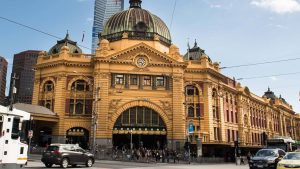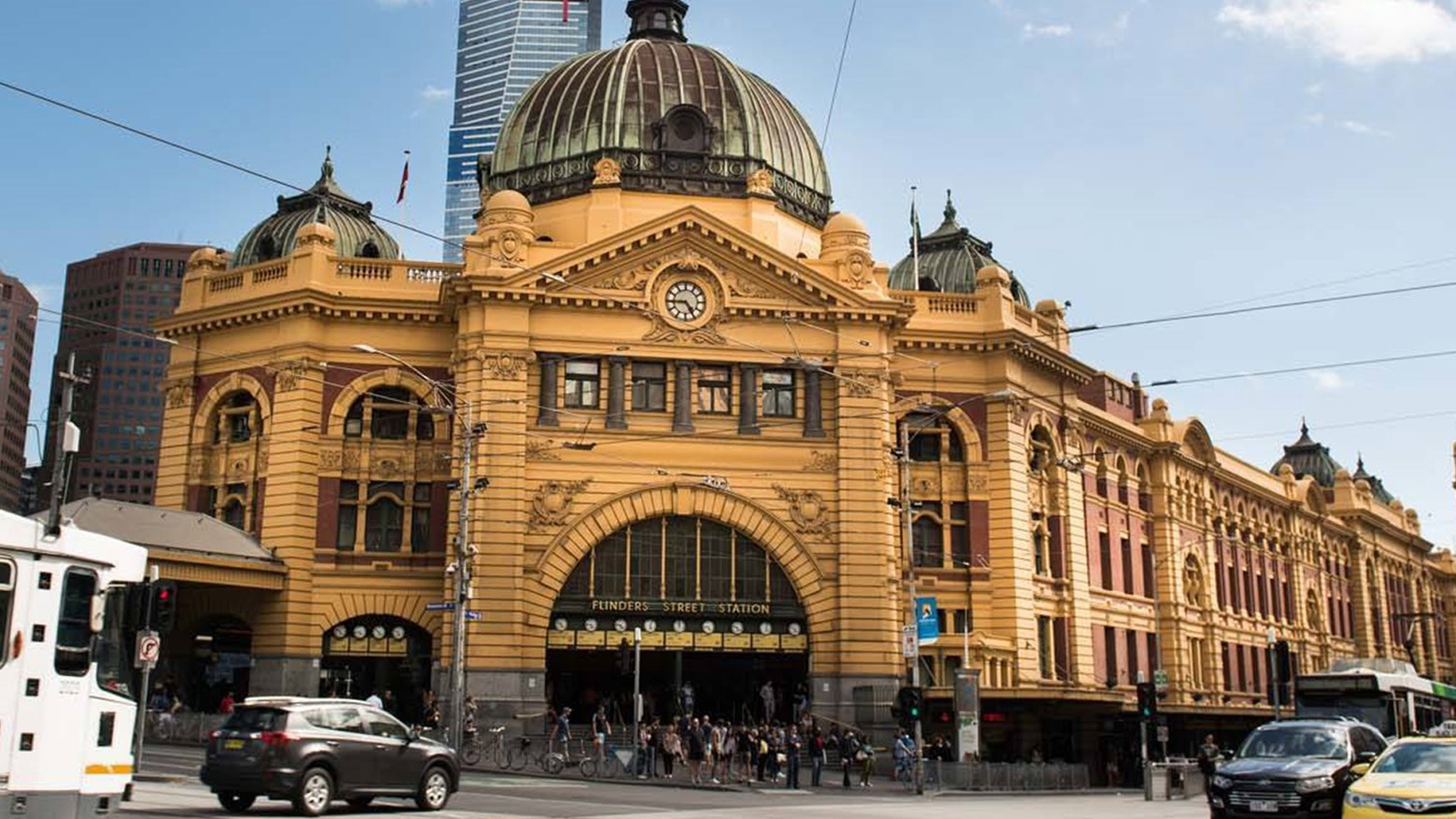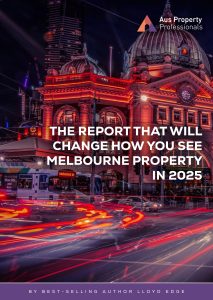The Blog That Will Change Your Mind On How You Will View The Melbourne Property Market in 2025.
Is the Melbourne Property Market undervalued in 2025?
The Melbourne property market has been experiencing a prolonged period of price stagnation and declines, making it one of the most undervalued capital cities in Australia in 2025. This means the Melbourne property market is now ripe for investors and many opportunities exist to invest in this market before price rise.

Why Is Melbourne Undervalued?
Declining Property Prices
Melbourne property values have fallen by an estimated 10% since January 2024, continuing a downward trend over approximately the past 12 months. This decline has been driven by factors such as increased land taxes, the removal of stamp duty concessions, and the lingering effects of Victoria’s strict pandemic-related border closures, which significantly affected population growth and a hit to investor’s confidence.
Government Policies
The Victorian State Government has introduced and removed policies and concessions that has discouraged property investors buying in Victoria. This has prompted a lower demand for properties, meaning that the available supply of properties will drop in price.
When demand in a market declines we know that properties will take longer to sell, there is less competition, buyers have the upper hand in negotiations and therefore prices drop.
Government Policies are a huge driver impacting property buyers in the Victorian markets. Here is a summary of the policies:
- Land Tax Increases: The Victorian government lowered the land tax-free threshold from $300,000 to $50,000 (effective from 1 January 2024), making it significantly less attractive for investors compared to New South Wales ($1,075,000 from 1 January 2025) and Queensland ($600,000).
- Removal of Stamp Duty Concessions: Off-the-plan property buyers previously benefited from reduced stamp duty rates, but this incentive has now been removed, increasing upfront costs by tens of thousands of dollars. And making it more difficult for some buyers to enter into the market.
- Stricter Rental Laws: New rental regulations have made it more difficult for landlords to evict tenants and recover properties, reducing the appeal of Melbourne’s property market to investors, so many investors are looking to other States to invest their money.
High Rental Demand vs. Low Investor Confidence
Despite Victoria’s property price decline, rents have risen sharply due to a low vacancy rates of just 1% (average across the state as of April 2025). This presents a paradox—while rental demand is booming, investor confidence remains weak due to tax and policy changes so less investment properties are being purchased and becoming available for renters in the Victorian market. For those who can navigate the market, this rental squeeze offers a unique investment opportunity.
Where to Find the Best Value in Melbourne in 2025?
Despite the overall market downturn, certain suburbs are poised for strong future growth and offer great value for buyers in 2025.
Where to invest:
- Middle-Ring Suburbs (5-15km from CBD): Areas such as Brunswick, Preston, Mount Waverley, Essendon, and Box Hill are expected to recover quickly due to strong rental demand and limited housing supply. Also consider the “sister” suburbs that will benefit from the on-flow effect when prices start rising in these areas.
- Suburbs Benefiting from Infrastructure Projects: Locations along the Suburban Rail Loop and near transport hubs (e.g., Clayton, Burwood) are set for long-term capital growth, once these projects are completed.
- Gentrifying Suburbs: Ringwood, Blackburn, and Glen Waverley continue to attract family buyers due to their proximity to good schools, parks, and public transport.
- Affordable Townhouses & Low-Rise Apartments: With housing affordability remaining an issue, suburbs such as Reservoir, Bentleigh, and McKinnon are seeing increasing demand for townhouses and units.
Government Incentives for Property Buyers in Victoria (2025)
Despite policies that have discouraged investors, there are still several incentives available for homebuyers in Victoria:
- First Home Owner Grant (FHOG): Eligible first-home buyers purchasing or building a new home valued up to $750,000, can receive a $10,000 grant ($20,000 for regional Victoria). To be eligible, the home must not have been previously sold or occupied.
- Stamp Duty Exemptions & Concessions: First-home buyers purchasing properties on or after 1 July 2017, you may be eligible for a duty exemption of concession. If your contract is dated before 1 July 2017, you may be eligible for a 50% duty reduction. Both the duty exemption and the 50% duty reduction are available to first home buyers when they purchase a new or established property in Victoria with a dutiable value up to $600,000. The duty concession applies where the dutiable value is more than $600,000 but not more than $750,000.
- Off-Market Property Deals: Due to strong buyer competition, many deals are happening off-market, providing opportunities for savvy buyers to secure properties at lower-than-advertised prices.
Legal differences when buying property in Victoria
The legal requirements are different State-to-State in Australia, and when buying property in Victoria, there are a few legal differences that set it apart.
Section 32 Statement (also known as the Vendor’s Statement). In Victoria, it is a legal requirement for the seller to provide this document before a contract of sale is signed. The Section 32 includes important details such as zoning, planning restrictions, outgoings, and any encumbrances on the property. While similar disclosures are required in other states, the specific format and timing of the Section 32 is unique to Victoria and is often prepared by a conveyancer or solicitor before listing the property.
Cooling-off period. In Victoria, buyers generally have a ‘cooling-off period’ of three business days to change their mind after signing a private sale contract, with some exceptions (e.g. property purchased at auction or shortly after an auction). This differs from New South Wales, where the cooling-off period is five business days, and Queensland, where it’s five business days but with a slightly different process for waiving or shortening the period. South Australia and Western Australia also have their own rules, with WA notably having no statutory cooling-off period for residential property.
Auction laws and procedures. In Victoria, properties sold at auction have no cooling-off period, and all terms (deposit, settlement, etc.) must be accepted as set on the auction day. Bidders must register on the day, and dummy bidding is illegal. These rules are generally consistent with other jurisdictions, but the regulatory framework is enforced by Consumer Affairs Victoria, which may differ in tone and approach compared to regulators in states like NSW (Fair Trading) or Queensland (Office of Fair Trading).
****
BTW… before we go on.
If you’d prefer to read this blog in a PDF and revised version, you can get it by clicking on the image below:
**** Let’s get back into it!
Focus on Victoria’s population.
Past 12 Months (2023-24)
Victoria’s population growth in the past year has been significantly driven by migration. Victoria’s net overseas migration (NOM) has rebounded strongly post-COVID, contributing between 82,000 and 84,000 people annually to the state’s population. Around 90% of these migrants settle in Melbourne, making migration the primary driver of the city’s growth. However, NOM is expected to moderate slightly due to higher offshore visa refusal rates and other policy changes.
Forecast for the Next 10 Years (source: planning.vic.gov.au)
- Melbourne’s population is expected to increase strongly, with net migration (both overseas and interstate) accounting for about 66% of Victoria’s overall growth.
- By 2034-35, Melbourne is projected to be the second-largest city in Australia (behind Sydney), with an expected increase of over 1.5 million people in the metropolitan area.
- The fastest-growing areas will be outer growth corridors such as Wyndham, Melton, Casey, Hume, and Whittlesea, where housing developments are expanding.
- While international migration will remain the largest contributor, Melbourne is also expected to see moderate gains from interstate migration and natural population growth (births exceeding deaths).
Overall, Melbourne is set to remain one of Australia’s fastest-growing cities, with strong migration trends shaping its population growth over the next decade.
How to negotiate a property deal in Victoria.
So, you have found a property you would like to buy in Victoria. What investors find the hardest to navigate is the differences between State property laws and they also struggle with the negotiation process.
Here are some tips on how to negotiate on buying property in Victoria:
1. Find the best deals by looking for motivated vendors.
With Melbourne’s price drops, buyers can find motivated vendors who are willing to negotiate and buyers can nab a really good deal. To find motivated vendors, you can research recent sales data and target properties that have been on the market for extended periods of time. The longer the days on market for a property, the higher likelihood the seller is willing to negotiate.
2. Leverage Market Conditions
- Use rising interest rates to your advantage: Some buyers are waiting to enter the market due to their borrowing constraints. This gives you the opportunity to buy in a market, with a lack of competition. When interest rates drop, we would expect to see more competition between buyers, which drives up property prices.
- Get in before the crowds: We can see that Victoria’s rental market is very tight with 1% vacancy rate in April 2025. With prices slumped across the State, it is not yet considered the latest investors “hot spot”. Now is your chance to get in before the market shifts and prices begin to rise.
3. Target Areas with Upcoming Infrastructure
If you are holding for the long term, areas that have a lot of construction around are not a nice area to live in now, so there is a strong chance you can negotiate a better deal on a property close to construction and infrastructure plans. However, once the projects are completed, these areas are the ones that will benefit from the upgraded transport and commercial developments, and this promotes strong future capital growth. The Suburban Rail Loop and Metro Tunnel expansion are key projects to watch.
Where to avoid when buying in Victoria.
Choosing the right location is crucial for investors but also one of the more difficult tasks, particularly if you are a first-time investor. While many suburbs offer strong growth potential, others will come with risks such as poor rental yields, high vacancy rates, or economic instability.
- Here are some areas to be cautious around when purchasing an investment property in Victoria and the reasons why:1. Outer Suburban and Regional Areas
While outer suburbs and regional towns often offer cheaper property prices, they can lack the infrastructure and amenities that are required to attract long-term tenants or future home buyers. Areas such as Melton South, Bacchus Marsh, and Werribee South have seen rapid development, but the local transport, schools, and healthcare services have struggled to keep up. Limited infrastructure can lead to slower capital growth and rental stagnation.
Be cautious in areas that have only one industry driving the local economy as these are high risk.2. High Vacancy Rate Suburbs
Vacancy rates are a key indicator of demand for rental properties. Suburbs with high vacancy rates mean more competition among landlords, leading to lower rental returns and longer periods of unoccupied properties. This is an indicator that the area is oversupplied in that type of property (usually apartments). These investors may be more risky because the rental income is determined by the comparative stock on the market. If there are lots of available rentals in an area, it is difficult to increase rental price or charge a premium.
3. High-Crime Areas
Crime rates can significantly impact the desirability of an area for tenants and future buyers. Suburbs like Broadmeadows, Frankston North, and Dandenong have historically reported higher crime rates compared to other parts of Melbourne. Higher crime levels often deter families and professionals, leading to slower price appreciation and difficulty securing reliable tenants.
4. Towns with Declining Population or Job Markets
Investors should be cautious about buying in areas where population and job opportunities are shrinking. Some towns in Gippsland and Western Victoria, such as Morwell and Stawell, have faced economic downturns due to the decline of manufacturing and mining industries. With fewer job prospects, there is less demand for rental properties, making it harder to achieve consistent rental income and property appreciation.
5. Areas Prone to Natural Disasters
Victoria has regions that are highly susceptible to bushfires and floods, which can affect property value and increase insurance costs. Areas such as Kinglake, Healesville, and parts of the Mornington Peninsula have experienced devastating bushfires in the past, making them risky for long-term investments. Similarly, towns along the Murray River, such as Echuca and Mildura, face potential flood risks, which can lead to costly repairs and reduced property desirability. You will also risk having a high vacancy period, should a disaster occur. You will also need to take out more costly property insurance which will impact the profitability and cashflow of your investment.
6. Overpriced and Speculative Markets
Certain areas experience property booms driven by speculation rather than sustainable demand. Suburbs that have seen sharp price increases without strong economic fundamentals, such as parts of Torquay and Ocean Grove, may face price corrections in the future. Investors should be cautious of buying at the peak of a speculative market to avoid financial losses.
Thank you for reading our blog on the Melbourne Property Market 2025. Make sure you head over to our YouTube channel by clicking here to discover more educational insights to level up your property investing including our latest video: Australian Property Market 2025 Forecast.
Disclaimer:
Aus Property Professionals Pty Ltd retains the copyright in relation to all the information contained on its website and in this guide. This guide, and any content provided in addition, or linked to resources, is general information only and not investment advice. As everyone’s individual situation is different, we advise individuals to always seek advice from relevant professionals such as legal, financial, accounting, and investing experts.
The intention of this guide is to be used for general information purposes only, in addition to your personal research and due diligence. We do not take any responsibility for any actions taken as a result of this guide as any actions should always be taken with consultation with relevant professionals who take individual circumstances to account.
Past performance doesn’t guarantee future results.
We have compiled the information contained in this guide from online resources, our research, and consultations, and we cannot guarantee the complete accuracy of this information, and we will always reference the resources where the data and information was derived.







